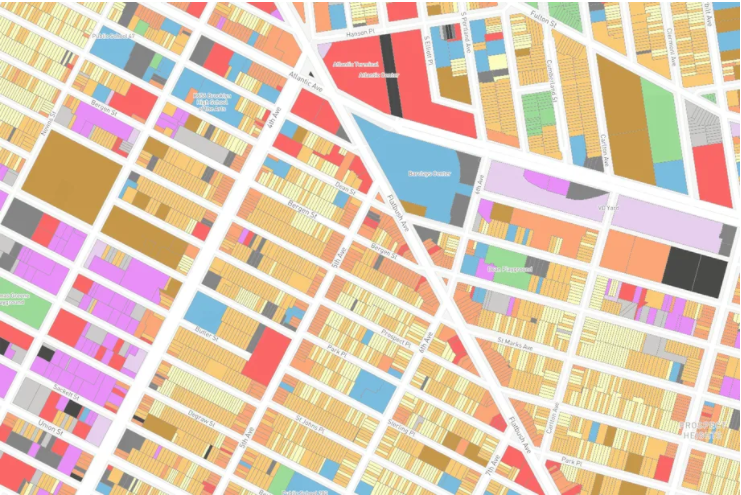
Policy Minute: Exclusionary Zoning

Across the country, policymakers are dealing with the impact of exclusionary zoning practices that have created barriers to housing supply and restricted access to high-opportunity neighborhoods for low-income families. This Policy Minute provides key data, perspectives, and Furman Center research to inform questions and discussions about exclusionary zoning, and how national lessons are being applied to New York State.
Recently in New York
The Regional Planning Association and Make the Road New York released new videos highlighting the increased need for housing options and the benefits of legalizing accessory dwelling units.
New York State Senator Rachel May introduced New York Senate Bill 7635 that would provide affordable housing developments a streamlined land use approval process in exclusionary jurisdictions.
The New York State Accessory Homes Act was introduced in February 2021 by New York State Senator Pete Harckham and Assembly Member Harvey Epstein to legalize the creation of accessory dwelling units statewide, in order to create more diverse and affordable housing options.
New York State Senator Brad Hoylman introduced Senate Bill 7574 in December 2021 to legalize “missing middle” multifamily construction across the state, including by eliminating requirements for single-family-only housing, for large minimum lot sizes, and for off-street parking.
By the Numbers
- Although the New York Metro Area’s population has grown by millions between 1980 and 2018, Westchester, Nassau, and Suffolk’s share of residents has decreased from 24.5 percent to 19.2 percent.
- The median rent of a housing unit in Westchester County increased by roughly 2.5 times from 1990 to 2018.
- Long Island’s housing production fell by 58 percent from the 2001-2008 period to the 2009-2018 period and in the northern suburbs, production fell by 50 percent during the same period.
- The New York region has the second-highest level of black-white segregation in the country, after Milwaukee, and the third-highest levels of both Asian-white and Hispanic-white segregation.
Furman Center Research and Events
- In a recently released policy brief, Models and Questions to Reform Exclusionary Zoning in New York, the Furman Center examines options and models of how New York’s peer states have promoted inclusionary housing development. The brief provides considerations for New York policymakers looking to reform current land use regulations.
- The Furman Center’s policy brief, The Case Against Restrictive Land Use and Zoning, outlines the drawbacks of current zoning practices in New York City and its suburbs. The brief highlights the impact of New York’s restrictive zoning on housing supply and the risks of future legislative inaction.
- In November 2020, the Furman Center hosted a two-part virtual policy breakfast series, Learning From Other States: Reforming State Zoning for Affordability, Integration, and Growth, discussing efforts to reform exclusionary zoning, housing affordability, and residential segregation in New York and states across the country. Furman Center Legal Fellow Noah Kazis moderated both conversations with panelists of various experiences related to the issue areas. Read a summary, or watch the videos below.
Other Research and Writing
- In Will Allowing Duplexes and Lot Splits on Parcels Zoned for Single-Family Create New Homes?, Ben Metcalf and colleagues examine the potential impact of the then-proposed (and since passed) Senate Bill 9 on California’s housing supply. The bill allows for homeowners to create additional housing units on previously single-family zoned lots.
- In The New York Times, residents of Clairemont, California reflect on neighborhood changes and tensions as accessory development units and multi-family developments create more density in their suburban neighborhood.
- In State Affordable Housing Appeals Systems and Access to Opportunity: Evidence From the Northeastern United States, Nicholas Marantz and Huixin Zheng compare four state affordable housing appeals systems and explore how overriding local land-use regulations impact housing outcomes.
- In The New State Zoning: Land Use Preemption Amid a Housing Crisis, John Infranca argues that the current housing crisis alongside numerous examples of state interventions in local zoning justify a new generation of state land-use interventions.
- In an installment of the “Roads to Recovery” series, PBS News Hour explores Connecticut’s efforts to reform its restrictive land-use laws.
- The Seattle Times reports on Seattle’s city council passage of a resolution, alongside their upzoning legislation, requiring other measures by the city and its partners to promote equitable development and mitigate displacement of marginalized communities.
Additional Viewpoints
- In Does Building New Housing Cause Displacement?: The Supply and Demand Effects of Construction in San Francisco, Kate Pennington finds that new market-rate developments in San Francisco decrease rents and displacement nearby, while also increasing gentrification.
- In Upzoning Chicago: Impacts of a Zoning Reform on Property Values and Housing Construction, Yonah Freemark demonstrates that upzoning in Chicago led to an increase in the property values of affected parcels, but did not lead to an increase in housing production in the area.


